
views
X
Research source
Reproduction in the Dog & Cat. Christiansen. Publisher: Bailliere Tindall.
Unlike a feral cat that must compete for food and experiences the short days of winter, a house cat has the luxury of plenty of food and artificial light. This means that while feral cats have a breeding season, with kittens born in the spring and early autumn, your house cat can go into heat at any time, and will probably do so every three to four weeks. The behaviors of a cat in heat can be alarming if you can't recognize the cause, but these instructions will allow you to determine whether your cat is in heat.
Recognizing Behavioral Signs

Listen for calling. Another term for being in heat is "calling." This is because the female becomes very vocal and will frequently walk around the house wailing or otherwise vocalizing. This can sound like a plaintive, distressed cry, and can be loud and persistent enough to keep you awake at night. If your cat is naturally chatty all the time, vocalization is not necessarily a sign she is in heat. When a cat is "calling," her cries typically becomes much louder and more persistent, and occur alongside other behaviors noted below.
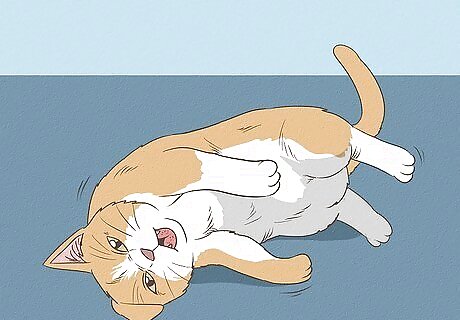
Watch for restless behavior. Restless behavior and an inability to settle are characteristic of a female cat in heat. This restlessness usually occurs at the same time as calling.
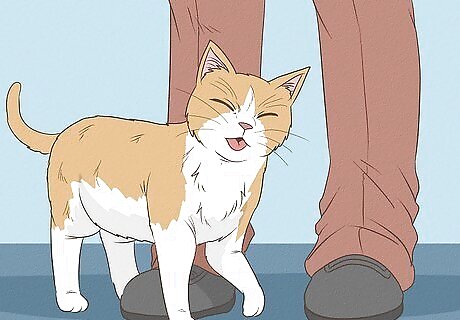
Expect increased affection. A female cat in heat is often much more affectionate than she would typically be. If you cat is naturally stand-offish, this will usually change when she is in heat. While in heat, your cat may rub around your ankles in such a persistent way that she becomes a trip hazard when you're trying to walk. This behavior will also manifest in the rubbing of her cheeks and chin (where her scent glands are located) against furniture, and especially entrance and exit points such as door frames. When in heat, a cat's scent changes subtly, and she enjoys spreading this around to advertise to that she'd like a mate to come visiting.
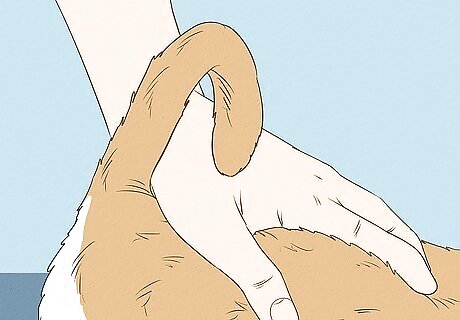
Pay attention to your cat's tail. A typical sign of a cat ready to mate is the tail deflection reflex. This simply means that when you rub her lower back, especially over her pelvis and tail base, the female sticks her bottom in the air and moves her tail to one side. This reflex is her way of making it easier for a male cat to gain access to her vulva to mate.
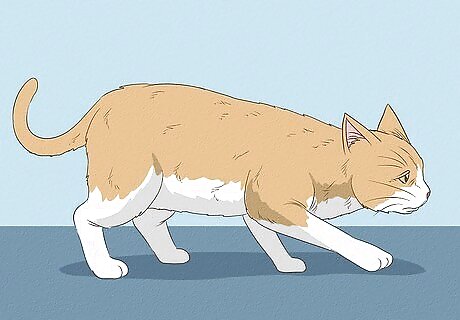
Look for "commando crawling." This is a behavior in which the cat flattens her front quarters to the ground while sticking her bottom in the air, and then crawling along the floor in this posture.
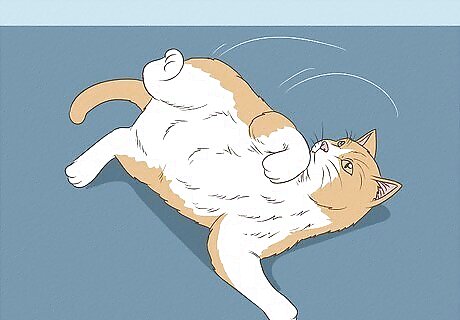
Watch for rolling. Some female cats in heat will roll around on the ground and wail at the same time. Understandably, if you don't know this behavior is entirely normal, it can appear alarming, and is a common cause of a panicked phone call to the on-call vet. However, this is not a sign that your cat is in pain.

Watch for excessive licking. When a cat is in heat, it is typical for her vulva to become swollen. This mild swelling is uncomfortable, and will likely lead your cat to spend a lot of time washing the area. This swelling is too slight for the casual observer to notice, so don't expect to see a physical difference.

Expect the cat to disappear. Even home-loving cats get adventurous when in heat. If a male cat doesn't come calling, then she is likely to go wandering for a day or so to seek one out for herself. If your cat is not spayed and you don't want her to get pregnant, keep her indoors during her heat and lock the cat flap so that intruders can't get in.
Understanding Your Cat's Reproductive Cycle
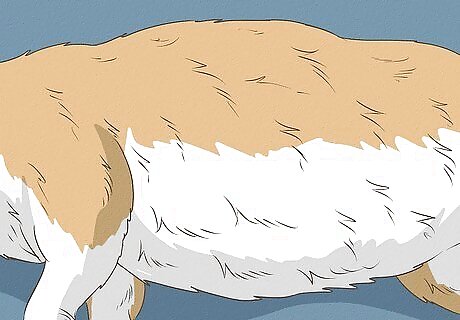
Understand the estrus cycle. Female cats are polyestrous, which means they go into heat many times a year. This is in contrast to dogs, which experience a diestrus cycle, coming into heat only twice a year. While in heat, your cat's womb will become swollen as its blood-supply increases in anticipation of a pregnancy. You will not be able to observe this, however, as there are no external signs of this process. Even young cats can go into heat. "I was worried my kitten had something wrong with her because she seemed to be in heat at 5 months old. I learned that this isn't all that unusual, and I was able to get her fixed right away." - Darla N. Listen to your cat. "My female stray started howling all the time and I didn't know why. This helped me figure out she's in heat. I scheduled her for an appointment next week to be spayed!" - Christina M. Did you know that wikiHow has collected over 365,000 reader stories since it started in 2005? We’d love to hear from you! Share your story here.
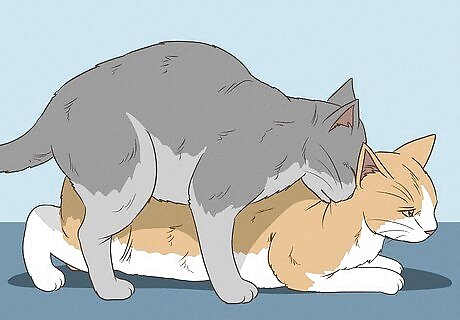
Understand the role of seasons. The breeding season of feral cats is between spring and late summer. This means kittens are born away from the harshest of the winter weather, when their chances of survival would be reduced. Artificial light can fool a pet cat into thinking it is not winter. As such, if your cat spends much time indoors, the changing of seasons will have little or no effect on her reproductive cycle. Expect a cat that lives indoors to come into heat all year around.
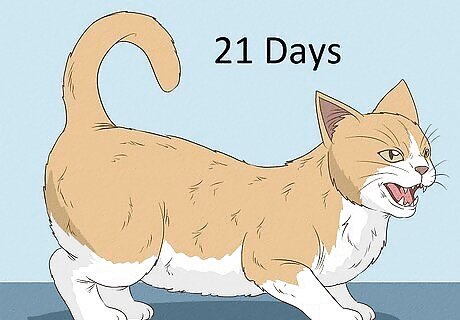
Know the time frame. The reproductive cycle of a female cat is, on average, 21 days. Of these three weeks, expect her to spend as many as seven days in heat.



















Comments
0 comment